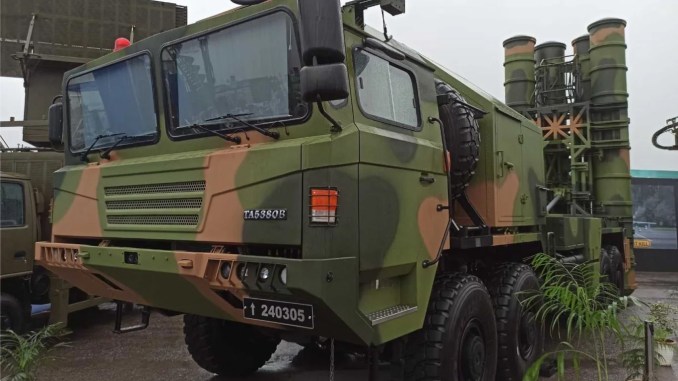
Chinese-built HQ-9BE surface-to-air missile systems are now operational within the Pakistan Air Force, marking a significant advancement in the country’s integrated air defense architecture. This deployment, which has not been officially publicized by Pakistani authorities, represents a substantial capability upgrade intended to counter evolving aerial threats in an increasingly contested regional environment.
The HQ-9BE is an export iteration of the original HQ-9 system developed by China Precision Machinery Import-Export Corporation. While the baseline HQ-9 drew heavily from Russian S-300PMU, the HQ-9BE introduces Chinese components. These include an extended engagement range of up to 200 kilometers enhanced target tracking performance against maneuvering aerial threats at varying altitudes. It also incorporates a Chinese seeker system, likely integrating semi-active radar homing guidance.
In operational terms, the HQ-9BE serves as the long-range strategic tier in Pakistan’s increasingly multi-layered air defense structure. It complements existing Chinese-supplied systems such as the HQ-16FE and LY-80, both of which provide medium and short-range coverage. With the HQ-9BE, Pakistan gains the ability to detect, track, and engage targets far beyond its immediate borders, which the HQ-9 failed to detect and intercept any Indian missiles or aircraft.
For Pakistan, the strategic benefits are clear. The deployment of the HQ-9BE strengthens the defensive posture of its key military and political centers, particularly in the northern regions near Islamabad and Rawalpindi. It also enhances the survivability of its own air force assets by imposing a larger threat envelope that can deter preemptive strikes or deep penetration missions.
India, in particular, must now reevaluate its operational plans along the western front. The HQ-9BE’s reach poses a credible threat to Indian Air Force assets such as A-50 AWACS and Su-30MKI platforms operating with stand-off munitions. These assets, vital to India’s surveillance and strike capabilities, may need to adjust flight paths and mission timing to remain outside the missile’s engagement envelope. Furthermore, the HQ-9BE could interfere with the deployment of long-range drones or cruise missiles by raising interception probabilities over key Pakistani territory.
With the HQ-9BE now operational, Pakistan signals its intent to maintain strategic deterrence and deny air superiority to any adversary within its vicinity. The introduction of this system not only strengthens national defense but also shifts the regional balance by challenging the air dominance traditionally held by India in the subcontinent. The future air combat environment in South Asia is now significantly more contested.
© 2025, GDC. © GDC and www.globaldefensecorp.com. Unauthorized use and/or duplication of this material without express and written permission from this site’s author and/or owner is strictly prohibited. Excerpts and links may be used, provided that full and clear credit is given to www.globaldefensecorp.com with appropriate and specific direction to the original content.





